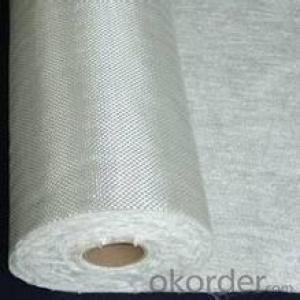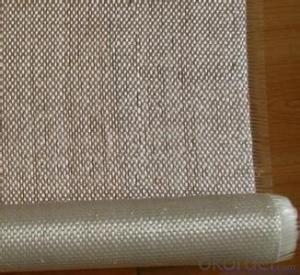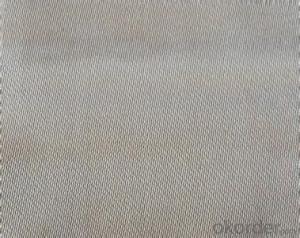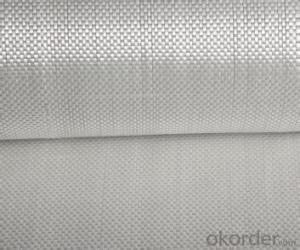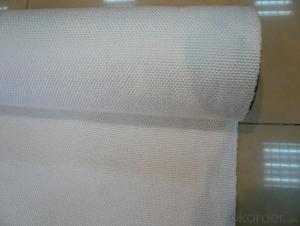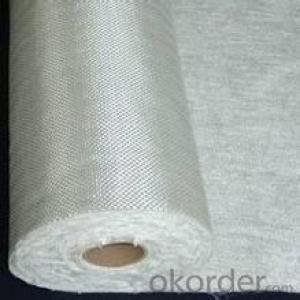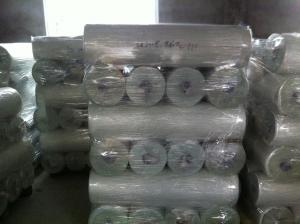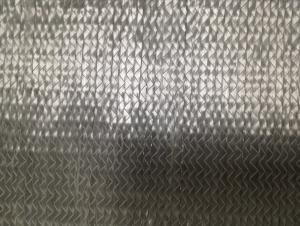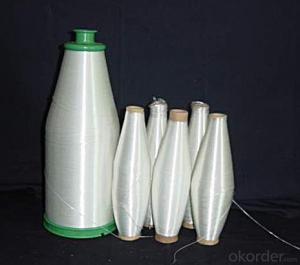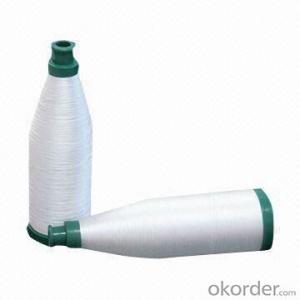Silica Fiberglass Fabrics
- Loading Port:
- China Main Port
- Payment Terms:
- TT OR LC
- Min Order Qty:
- -
- Supply Capability:
- -
OKorder Service Pledge
Quality Product, Order Online Tracking, Timely Delivery
OKorder Financial Service
Credit Rating, Credit Services, Credit Purchasing
You Might Also Like
Quick Details
| Type: | Place of Origin: | Brand Name: | |||
| Model Number: | Silica Fiber Cloth: | Silica Fiber Cloth material: | |||
| Silica Fiber Cloth MFG: | Silica Fiber Cloth thick: |
Packaging & Delivery
| Packaging Detail: | Silica Fiber Cloth package export carton box. |
| Delivery Detail: | 5-10 days. |
Specifications
1 Silica Fiber Cloth better than Silicaflex
2 Silica Fiber Cloth 96% SiO2 silica fiber
3 Silica Fiber Cloth high quality
1800°F / 982°C Continuous Exposure: Higher Intermittent
Silica Fiber Cloth
- Q: Can fiberglass fabrics be used in high-temperature environments?
- Indeed, high-temperature environments can accommodate the utilization of fiberglass fabrics. The exceptional resistance to heat possessed by fiberglass renders it an optimal option for purposes necessitating insulation or safeguarding against elevated temperatures. Its structural integrity and performance remain intact even when confronted with temperatures as high as 1000°F (538°C). Industries such as aerospace, automotive, and manufacturing frequently employ these fabrics due to the prevalence of high temperatures in their operations. Moreover, fiberglass fabrics exhibit characteristics of being lightweight, durable, and possessing commendable thermal conductivity, thereby establishing themselves as an ideal material for high-temperature surroundings.
- Q: Are there any limitations or drawbacks to using fiberglass fabrics?
- Yes, there are certain limitations and drawbacks to using fiberglass fabrics. Firstly, fiberglass fabrics can be relatively expensive compared to other fabric options. Additionally, working with fiberglass fabrics requires specialized equipment and expertise, making it more challenging for DIY or inexperienced users. Furthermore, fiberglass fabrics can be brittle and prone to cracking or breaking under excessive stress or impact. Finally, fiberglass fabrics may have limited flexibility, making them less suitable for applications that require a high degree of flexibility or stretchability.
- Q: Can fiberglass fabric be used in marine applications?
- Yes, fiberglass fabric can be used in marine applications. Fiberglass is a versatile material that is commonly used in boat building and repair due to its strength, durability, and resistance to water and corrosion. Fiberglass fabric can be used to reinforce the hull, decks, and other structural components of a boat, providing additional strength and stability. It is also commonly used for the construction of boat interiors, such as cabinetry and seating, as it can be easily molded and shaped to fit specific design requirements. Additionally, fiberglass fabric is often used in the repair and maintenance of boats, as it can be used to patch and reinforce damaged areas. Overall, fiberglass fabric is a popular choice for marine applications due to its excellent performance in the marine environment.
- Q: Is fiberglass fabric suitable for use in electrical insulation tapes?
- Yes, fiberglass fabric is suitable for use in electrical insulation tapes. It has excellent electrical insulation properties, high resistance to heat and fire, and good mechanical strength. Additionally, it provides good dimensional stability and chemical resistance, making it a reliable choice for electrical insulation applications.
- Q: Can fiberglass fabric be used for making surfboards?
- Yes, fiberglass fabric can be used for making surfboards. It is commonly used as a reinforcement material in surfboard construction, providing strength and durability to the board's structure.
- Q: Are fiberglass fabrics suitable for use in the transportation industry?
- Yes, fiberglass fabrics are suitable for use in the transportation industry. They offer excellent strength-to-weight ratio, durability, and resistance to various environmental conditions. They are commonly used in the manufacturing of automobile components, aircraft parts, and marine vessels due to their high mechanical properties and ability to withstand harsh environments.
- Q: How is fiberglass fabric used in the production of thermal blankets?
- Fiberglass fabric is commonly used in the production of thermal blankets due to its unique properties that make it an excellent insulator. The fabric is made from fine strands of glass fibers woven together to create a durable and flexible material. In the production of thermal blankets, fiberglass fabric is used as an insulating layer. The fabric is usually placed between two layers of other materials, such as polyester or nylon, to create a sandwich-like structure. This design helps to trap air and create a barrier against heat loss. The glass fibers in the fabric have low thermal conductivity, which means they are poor conductors of heat. This property allows the fabric to effectively reduce heat transfer by conduction, preventing the loss of body heat and keeping the user warm. Additionally, fiberglass fabric is also resistant to fire and can withstand high temperatures. This is crucial in the production of thermal blankets as it ensures the safety of the user. The fabric acts as a fire retardant, preventing the spread of flames and providing an added layer of protection. Furthermore, fiberglass fabric is lightweight and flexible, making it easy to handle and use in the production of thermal blankets. It can be easily cut, sewn, and molded to fit different sizes and shapes, providing versatility in the manufacturing process. Overall, the use of fiberglass fabric in the production of thermal blankets offers excellent insulation, fire resistance, and durability. It plays a crucial role in keeping individuals warm and protected in various settings, such as emergency situations, outdoor activities, or even in healthcare facilities.
- Q: How is fiberglass fabric used in the medical industry?
- Due to its unique properties and characteristics, fiberglass fabric finds wide application in the medical industry. One primary use of fiberglass fabric in this industry is for the manufacturing of cast and splint materials. When a patient suffers from a fracture or broken bone, a combination of fiberglass fabric and resin material is used to create a cast or splint that offers support and immobilization to the affected area. The fabric is soaked in a resin solution and then applied to the patient's limb, where it solidifies and forms a rigid structure. The lightweight and durable nature of fiberglass fabric make it an ideal choice for these purposes as it provides the necessary rigidity and support while still allowing for mobility and comfort. Moreover, fiberglass fabric is also employed in the production of prosthetics and orthotics. Prosthetics are artificial limbs or body parts that replace missing or non-functional body parts, while orthotics are devices used to support, align, and improve the function of different body parts. Fiberglass fabric is often used as a reinforcement material in constructing these devices as it offers high strength and stability. The fabric is layered and bonded with other materials to create a sturdy and lightweight structure that can withstand daily wear and tear. Additionally, fiberglass fabric is utilized in manufacturing medical equipment such as surgical drapes and gowns. These fabrics are designed to act as a barrier against fluids and microorganisms, preventing contamination during surgical procedures. The impermeable nature of fiberglass fabric makes it an effective choice for these applications as it bars fluid penetration and maintains a sterile environment. In conclusion, fiberglass fabric plays a vital role in the medical industry by providing support, strength, and protection in various applications. Its versatility, durability, and ability to conform to different shapes and sizes make it an invaluable material for medical professionals in their efforts to provide optimal care and treatment to patients.
- Q: What is Teflon?
- Teflon English called Polytetrafluoroetylene, referred to as Teflon, PTFE and F4. High performance special Teflon coating is fluorine coating resin with polytetrafluoroethylene, English name for Teflon, because the pronunciation of the reason, is usually known as Teflon molecular image
- Q: What material can be used instead of fiberglass cloth?
- Non woven fabrics can be replaced, but the price is more expensive than fiberglass cloth
Send your message to us
Silica Fiberglass Fabrics
- Loading Port:
- China Main Port
- Payment Terms:
- TT OR LC
- Min Order Qty:
- -
- Supply Capability:
- -
OKorder Service Pledge
Quality Product, Order Online Tracking, Timely Delivery
OKorder Financial Service
Credit Rating, Credit Services, Credit Purchasing
Similar products
Hot products
Hot Searches
Related keywords
